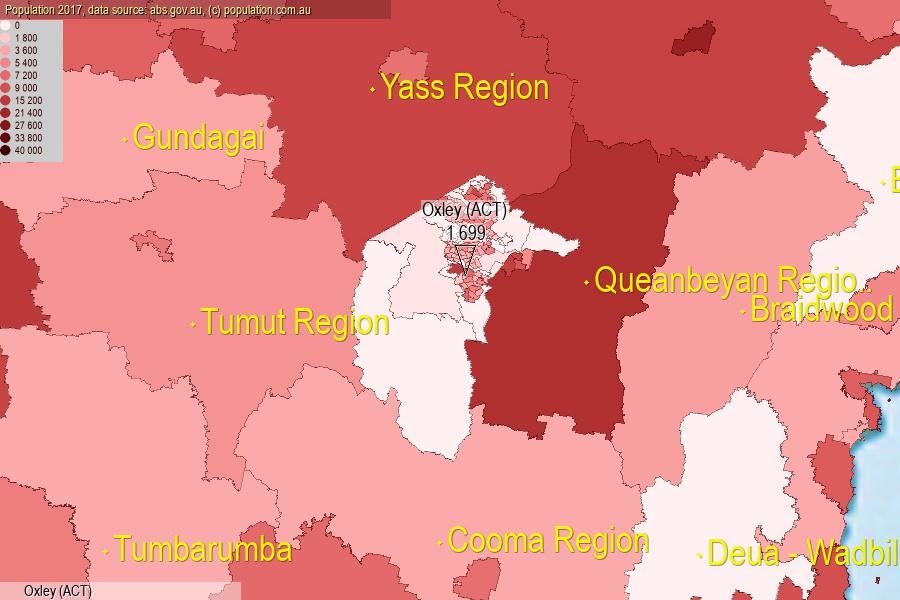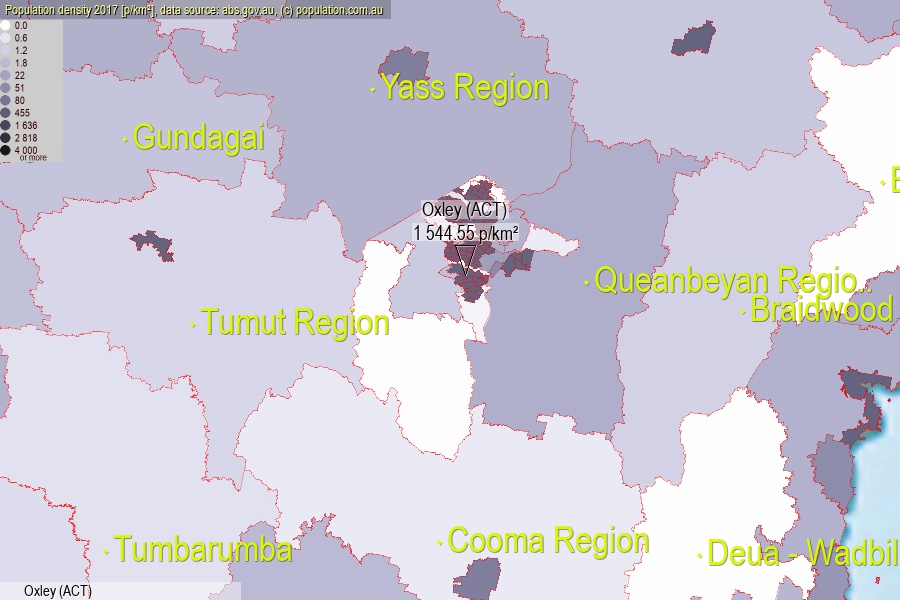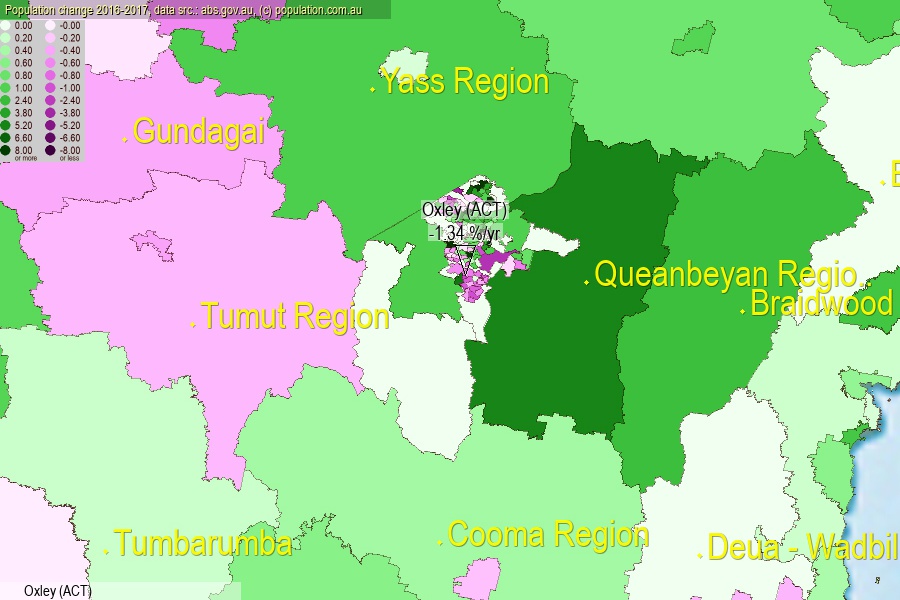 population.com.au
population.com.auLast official estimated population of Oxley (ACT) (as Statistical Area Level 2) was 1 699 people (on 2017-06-30)[2]. This was 0.01% of total Australian population and 0.405% of ACT population. Area of Oxley (ACT) is 1.10 km², in this year population density was 1 544.55 p/km² . If population growth rate would be same as in period 2016-2017 (-1.34%/yr), Oxley (ACT) population in 2025 would be 1 526. [0]



Click to enlarge. Oxley (ACT) is located in the center of the images.
Population [people], population density [p./km²] and population change [%/year] [2]
View borders » (new window) [4]
[1991-1992] -1.01 %/Yr.
[1992-1993] -2.54 %/Yr.
[1993-1994] -3.27 %/Yr.
[1994-1995] -2.30 %/Yr.
[1995-1996] -1.40 %/Yr.
[1996-1997] -2.39 %/Yr.
[1997-1998] -0.73 %/Yr.
[1998-1999] -1.21 %/Yr.
[1999-2000] +0.58 %/Yr.
[2000-2001] +0.26 %/Yr.
[2001-2002] +0.11 %/Yr.
[2002-2003] -1.16 %/Yr.
[2003-2004] -1.12 %/Yr.
[2004-2005] -0.05 %/Yr.
[2005-2006] +0.54 %/Yr.
[2006-2007] +0.48 %/Yr.
[2007-2008] -0.11 %/Yr.
[2008-2009] -0.27 %/Yr.
[2009-2010] -0.91 %/Yr.
[2010-2011] -1.62 %/Yr.
[2011-2012] -0.77 %/Yr.
[2012-2013] -1.49 %/Yr.
[2013-2014] -1.35 %/Yr.
[2014-2015] -1.25 %/Yr.
[2015-2016] -0.69 %/Yr.
[2016-2017] -1.34 %/Yr.
[0] Calculated with linear interpolation from officially estimated population
[1] Read more about SA2 and Australian Statistical Geography Standard (ASGS) on abs.gov.au
[2] Population data from Australian Bureau of Statistics (Population and density: 2017; change: 2016-2017)
[3] Digital Boundaries: Australian Statistical Geography Standard (ASGS) 2016.
[4] Border coordinates are simplifyed using Ramer-Douglas-Peucker algorithm.